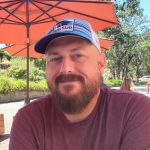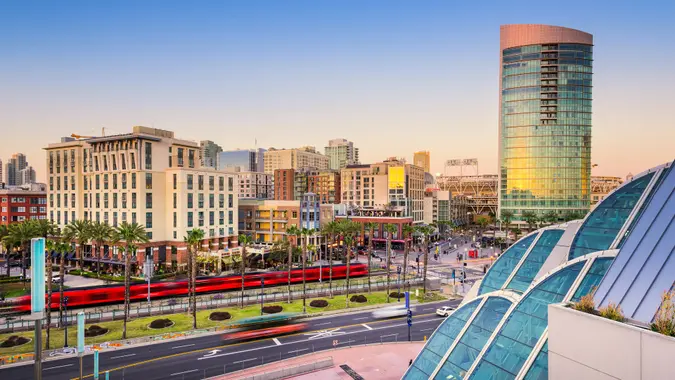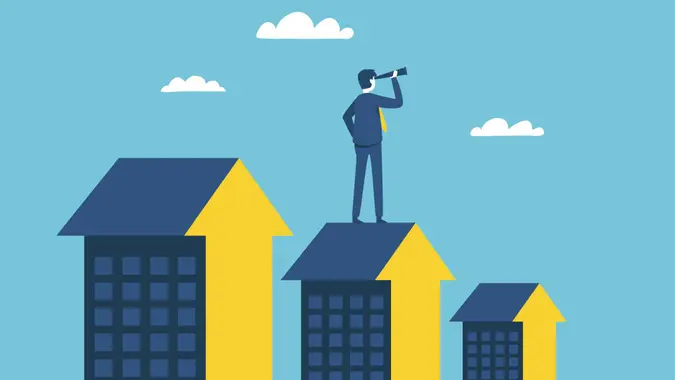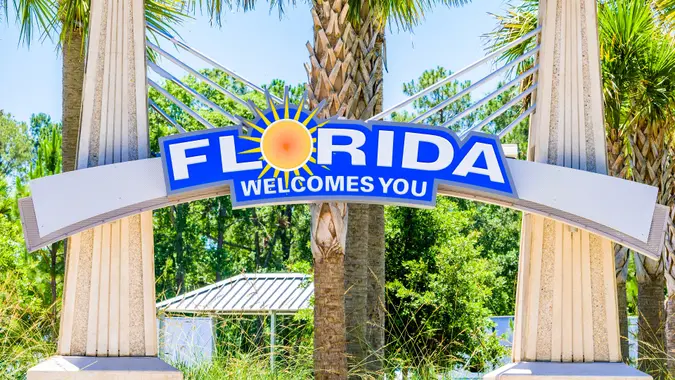‘Rich Dad’ Author Robert Kiyosaki: ‘I Don’t Have a Paycheck; That’s Why I’m Rich’

Commitment to Our Readers
GOBankingRates' editorial team is committed to bringing you unbiased reviews and information. We use data-driven methodologies to evaluate financial products and services - our reviews and ratings are not influenced by advertisers. You can read more about our editorial guidelines and our products and services review methodology.

20 Years
Helping You Live Richer

Reviewed
by Experts

Trusted by
Millions of Readers
If you’ve been in a bookstore over the last 20 years, you’ve probably seen at least one written by Robert Kiyosaki. Known best for the massive bestseller, “Rich Dad, Poor Dad,” Kiyosaki is the author of dozens of books, and through his businesses he also has sold financial education software, videos and training seminars.
Central to Kiyosaki’s story are his anecdotes about his own father, the titular poor dad, and his friend’s entrepreneur father, the rich dad. In this video, Kiyosaki explains some of the key points of his investing philosophy.
‘I Don’t Want a Paycheck; I Don’t Need a Paycheck’
Kiyosaki opens by pointing out that the majority of people want to find secure jobs and get regular paychecks. But Kiyosaki doesn’t want or need a paycheck. That, he says, is why he’s rich.
Traditional education teaches people to be an employee, but Kiyosaki argues that the real path to wealth is to be an entrepreneur — but not just any entrepreneur.
‘Real Estate Is Wealth’
After Kiyosaki served in Vietnam, he says, his “poor dad” told him to use his pilot training to become a commercial pilot. His “rich dad” told him not to be an employee. Kiyosaki took a real estate course at his rich dad’s behest, and that, he says, put him on the road to wealth.
Eschewing the more common routes of investing, like the stock market, he put his focus solely on real estate, which has two key advantages: tax savings and using debt.
‘There Is No Financial Education in School’
Kiyosaki emphasizes again that the traditional education system teaches people to be employees who seek regular paychecks, benefits and perhaps retirement plans.
Then there are the small entrepreneurs. Web designers, massage therapists, even doctors and lawyers — technically business owners, but in practice self-employed, and still paying taxes and working for money. Kiyosaki makes the comparison of a small restaurant owner against a titan like McDonald’s, saying it’s a matter of mindset.
‘Rich Dad Would Break Out the Monopoly’
Kiyosaki relates an anecdote of how “rich dad” used the board game Monopoly to illustrate this mindset. If you’re not familiar with the game, you acquire a property and build houses on it, which can eventually be exchanged for hotels, which generate (usually) game-winning rent.
Kiyosaki’s “rich dad” was a real estate investor who owned a number of houses. In the story, “rich dad” used the funds from investing in houses to purchase a hotel, eventually selling it for $800 million — from a purchase price of $1.2 million.
‘It Makes No Sense To Save Money’
Here Kiyosaki gets to one of the core tenets of his scheme. His argument is that once the U.S. dollar was taken off the gold standard, it became debt — thus, the traditional personal finance advice of saving money ran counter to the accumulation of true wealth.
The real winners, he says, are those who use debt to make money. Savers put their money in the bank, while Kiyosaki’s “winners” take that money out as debt and use it to generate returns by purchasing real estate.
More From GOBankingRates
 Written by
Written by  Edited by
Edited by 
























